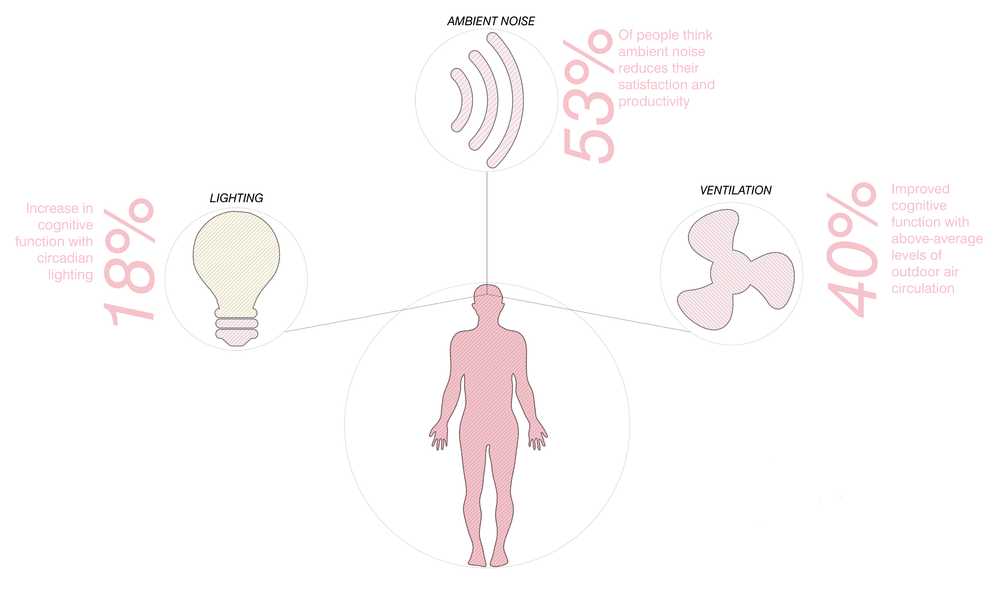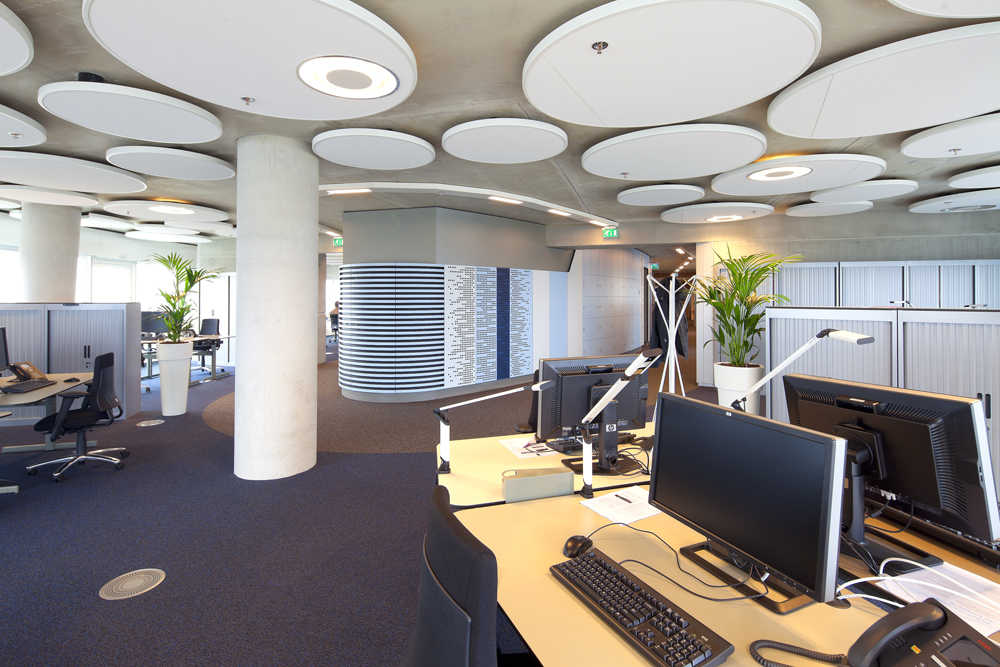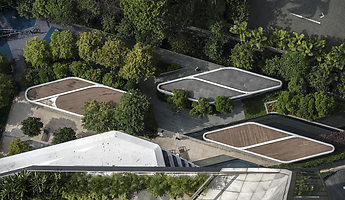Humans in wealthy countries spend on average 90% of their lives inside buildings. With most of this time split between office and home environments, architects and designers need to promote healthy systems for indoor air quality and lighting in these spaces. Prolonged exposure to poor air quality, artificial lighting and excess ambient noise can negatively affect the health and wellbeing of building occupants.
Natural ventilation can help keep indoor pollutants to a minimum, as well as remove stagnant air. In buildings lacking natural ventilation, mechanical systems are needed to support air circulation. To match the effect of natural ventilation, mechanical systems need to provide 30 cubic metres per hour per person of fresh air. A 2017 Harvard Center for Health and the Global Environment study shows that above-average levels of outdoor air circulating in an office can improve cognitive function by 40% beyond simply reducing the amount of air pollutants.
Proper lighting ranks with good air quality as one of the most important factors for improving mental and physical wellbeing. In offices with large floorplates, the use of artificial lighting is sometimes unavoidable. Potential negative effects of artificial lighting can be mitigated by implementing circadian lighting, a lighting system that emits warm amber light in the morning, shifts to bright, blue light during the day and concludes with dim amber light in the evening. This method of lighting resets the body’s natural circadian clock, enabling people to get more and better sleep and therefore be more productive during the day. After CBRE installed circadian lighting during a ‘healthy office’ study in 2018, 71% of participants reported feeling more energised, while participants noticed an 18% increase in their cognitive performance. One point of caution for workers who sit next to windows: glare can cause sore eyes and reduced cognitive performance, so their workspaces should include appropriate and flexible window coverings.
Another contributing factor to reduced office worker performance is the ambient noise produced by conversations and movement around the office. Of 1200 office workers Oxford Economics surveyed in 2015, 53% reported that ambient noise reduces their work satisfaction and productivity. One method to reduce the psychological impact of noise is to ‘mask’ it with either contradicting sound waves, similarly to how noise-cancelling headphones work, or, as a 2015 study by DeLoach, Carter and Braasch found to be effective, natural sounds. Not only did the natural sounds reduce the ambient noise with the same effect as ‘contradicting’ masking, they also enhanced the cognitive ability to those exposed to them.
Key points for architects and designers:
- REGULARLY MONITOR AIR QUALITY TO MEET VENTILATION GUIDELINES
- DESIGN FOR COMPLEMENTARY NATURAL LIGHTING AND CIRCADIAN ARTIFICIAL LIGHTING
- REDUCE AMBIENT NOISE IN WORK AREAS
UNStudio’s Education Executive Agency and Tax Office incorporates strategies to improve the air, light and sound quality and thus the building occupants’ wellbeing and health: natural lighting spread across shallow floorplates, high pressure air ventilation, intelligent sun shading, concrete core activation heating and cooling, acoustic panels to dampen noise, amongst other important features like bicycle storage and green space. All these factors contribute to a healthy working environment for the occupants of the building, consequently improving their performance at work.
UNStudio Team: Luke Parkhurst, Filippo Lodi, Bart Chompff, Marisa Cortright




